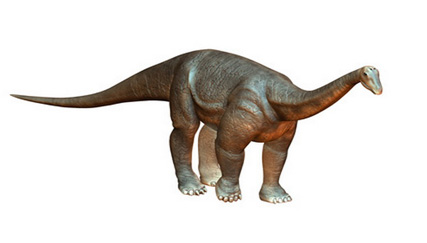Yongjinglong (phonetically spelled as Yong-jing-long) is a Datangi type species named by Li-Guo Li, Da-Qing Li, Hai-Lu You & Peter Dodson in 2014. The classification of this species is as follows:
Chordata – Reptilia – Dinosauria – Saurischia – Theropoda – Sauropoda – Titanosauria

The size of this species is uncertain. The holotype fossils are from an incomplete individual. It is estimated to have been about 15-18 meters long. However this specimen is of a juvenile or sub-adult and not a fully grown adult, therefore the true adult size remains unknown. The known location of this species is the Gansu province in China. They existed during the Early Cretaceous era. The fossil representations include teeth and partial remains including vertebrae, rib, ulna, radius, coracoid and scapula of a juvenile or sub-adult.
The generic name of the Yongjinglong is derived from the name of the historical Yongjing County, near where the holotype of Yongjinglong and numerous dinosaur track fossils were collected, and from long, meaning "dragon" in Chinese. The specific name, datangi, honors the Tang dynasty and also Mr. Zhi-Lu Tang from the IVPP, for his contributions to the study of dinosaurs. Yongjinglong was first described and named by Li-Guo Li, Da-Qing Li, Hai-Lu You and Peter Dodson in 2014 and the type species is Yongjinglong datangi.
Yongjinglong is an extinct genus of herbivorous derived titanosaur sauropod dinosaur known from the Early Cretaceous of Lanzhou-Minhe Basin of Gansu Province, China. It contains a single species, Yongjinglong datangi. The diagnostic traits of this species include the following. The neck vertebrae and anterior dorsal vertebrae possess large and deep pleurocoels, pneumatic depressions, which cover the entire sides of the centra. The premaxillary teeth are long and spoon-shaped. The spine of at least one middle dorsal vertebra is low and not bifurcated and forms with the postzygapophyses a triangular bone plate, directed upwards. The shoulder blade is extremely long, with, in side view, exceptionally straight front and rear edges. The pre-maxillary teeth are long and spoon-shaped.
| Name: | Yongjinglong (Yongjing dragon). |
| Phonetic: | Yong-jing-long. |
| Fossil representation: | Teeth and partial remains including vertebrae, rib, ulna, radius, coracoid and scapula of a juvenile or subadult. |